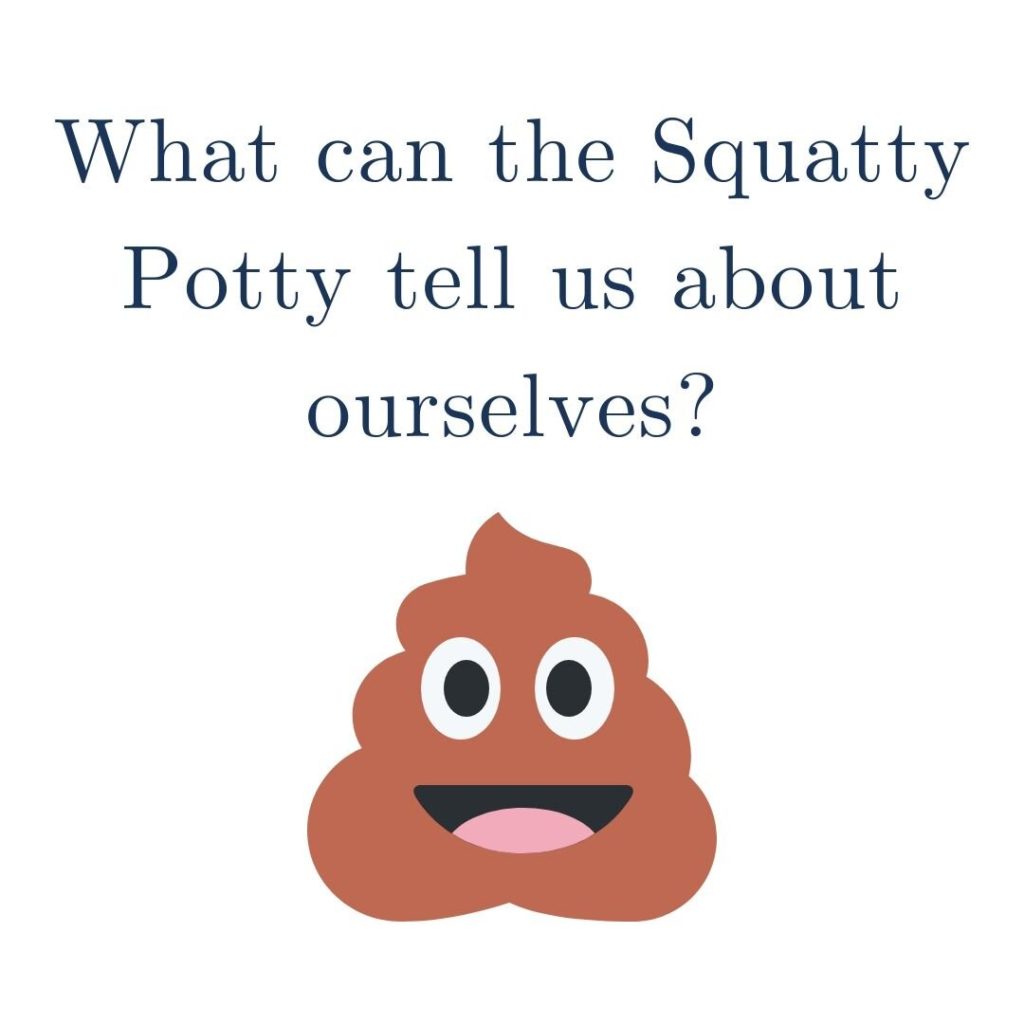Have you ever seen the Squatty Potty commercial? In short, this device is a little foot stool that you use while sitting on the toilet. It positions your pelvis so that the effort and ability to pass a stool is easier. Try it out, you’ll be amazed.
This tool also helps us highlight the range of motion in our hips. You see, in order to get the knees above the level of the pelvis there needs to be sufficient hip flexion (think knee up) and external rotation (think crossing one leg). This is very similar to the squatting motion.
Yesterday we talked about how MRIs present with a high percentage of false positives, meaning that an MRI may look like ‘a mess’ (degeneration, bulging discs, etc.), but may not be an indicator of the pain/lack of pain. Today we will focus on how flexibility can impact low back pain/dysfunction.
Research has associated limited hip range of motion with chronic low back pain. The directions of movement most often linked with pain and tightness include hip flexion, extension, and internal rotation. It was hypothesized if these motions were limited, the loss of motion would be compensated at the lumbar spine (aka low back) creating instability and pain. In other words, if one area is tight, another area will ‘loosen’ to accomodate for the lost motion.
Hip flexion is the action of bringing the knee to the chest and normal range of motion is around 120 degrees. This can vary due to quad size, torso thickness (abdominal fat), and hip joint mechanics. When assuming end range hip flexion like in the bottom of the squat, the joint will reach maximal closure. However, if this movement is limited, there will be excessive motion at the low back. Too much of anything can cause pain. Our favorite hip flexion opener is the deep lunge hip floss (found here).
Hip extension is very useful as it helps us propel our body forward when walking, jumping, and even standing up straight. Normal range of motion is between 10-15 degrees. However, this can certainly be influenced by factors such as hip flexor tightness, pelvis positioning and standing posture. (Stay tuned for another article about the infamous, anterior pelvic tilt). The challenge is when hip extension is limited and unable to reach a fully neutral position (aka 0 degrees). If you calculate the hours we spend sitting slumped forward in our chair, and combine that with the time when we are standing in an anterior tilt, the area that is often affected are the hip flexors and low back.
When we aren’t able to full extend the hip, the low back has to ‘arch’ more to allow our legs to move us. You can often see this when the arch of the lower back becomes more accentuated. Another example is when people are deadlifting with a barbell and their shoulders end up behind the bar (competitive fitness standards), and the back stays super arched. The true position should actually be shoulders right on top of the hips, right on top of the middle of the foot, with the glutes squeezed maximally (=neutral spine). There are two ways to open up the hips in extension, which include rolling out the quads and the supported hip bridge.
Hip internal rotation often gets overlooked. Sufficient rotation of the hips will be crucial for maximal motion (normal range is 40-45 degrees). Again, any limitation at the hips will often present itself with instability at the low back, or even the knee. Internal rotation of the hips are crucial especially during the push off phase of our walking or running. If we are limited in that motion, the pelvis can rotate, and since the pelvis is a series of rigid bones, the motion gets made up at the low back. Repetitive motion at the spine can cause achiness, pain and overall stiffness. You can address this motion with shin boxes (here is the video).
Improving your hip flexibility can be very powerful when it comes to reducing and preventing back pain. However, it is only the tip of the iceberg and is not the only way to address the issue. Tomorrow we will be covering another component now that you’ve worked on improving the range of motion in your hips. Stability.
If you are coming off of a back injury and are scared to get back into a routine that can help your fitness without causing pain, book your call with a coach today by clicking here. We can pair you up with one of our physical therapist strength coaches who can teach you how to lift correctly and get yourself back into the groove. Also, our other coaches have the knowledge passed down from us to ensure that you work out safely and effectively. You don’t have to go through this pain/recovery alone.
Ashley
*The owner will not be liable for any errors or omissions in the information provided nor will the owner be liable for any accidents, injuries or other damage, howsoever occurring to any person or property arising out of or in any way connected to the use or application of information obtained from this


